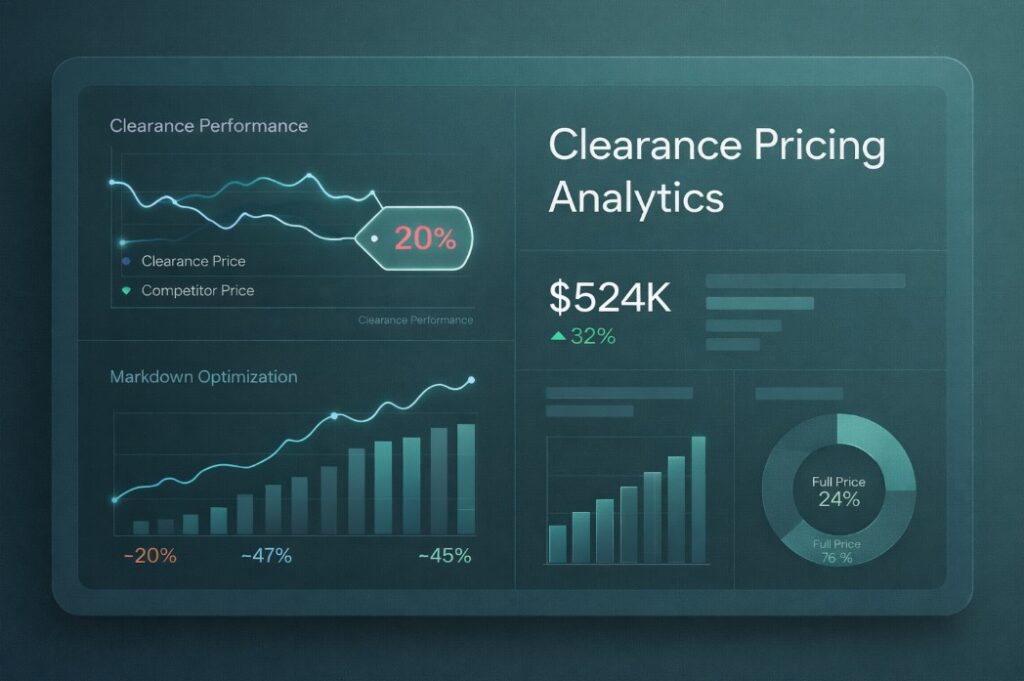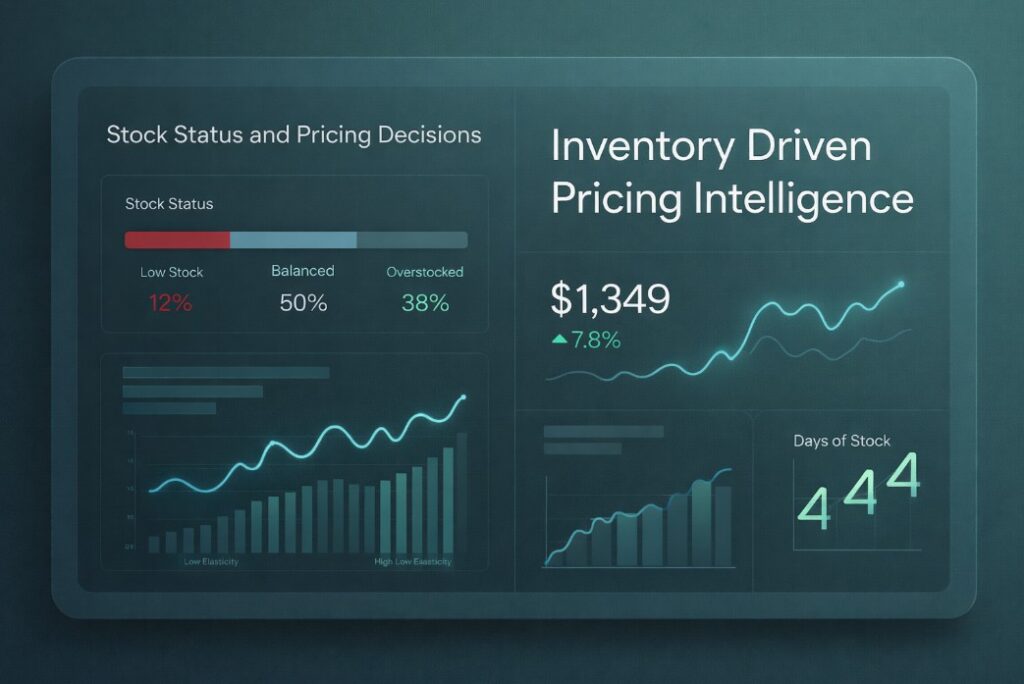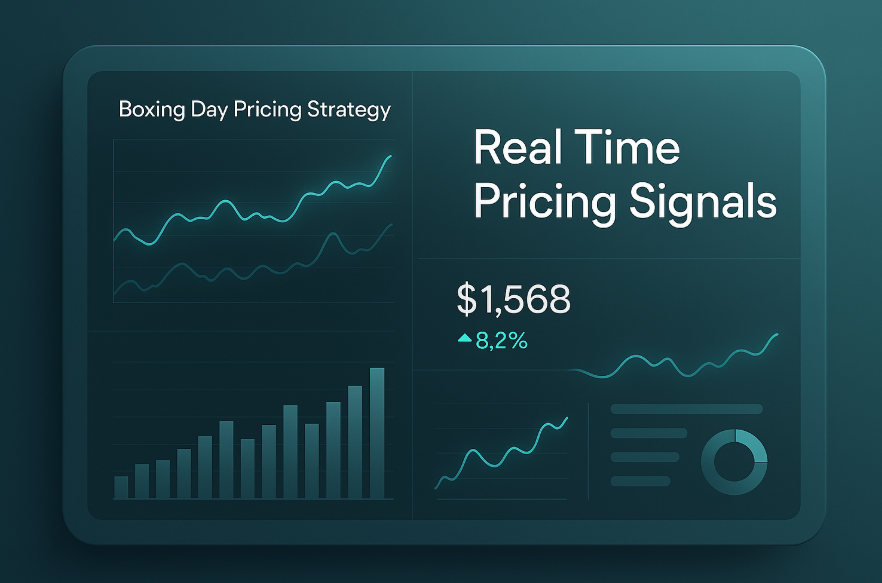- Product
- Solution for
For Your Industry
- Plans & Pricing
- Company
- Resources
For Your Industry
Retail is changing faster than ever. Prices shift daily — sometimes hourly — as competitors, supply, and consumer demand evolve. Static price lists can no longer keep up.
That’s where dynamic pricing comes in.
Dynamic pricing allows retailers to adjust prices in real time based on demand, competition, and market conditions. It’s how leading retailers like Amazon, Walmart, and Zara stay competitive — and how smaller brands can now use data and automation to do the same.
In this beginner’s guide, you’ll learn the fundamentals of dynamic pricing, how it works, and how to get started — including practical tips and insights from tgndata’s pricing intelligence solutions.

Dynamic pricing is the practice of changing product prices automatically or frequently based on real-time data.
Instead of fixed markups, dynamic pricing uses algorithms and analytics to determine the optimal price at any given moment — maximizing sales and profitability.
Competitor pricing data
Demand and conversion rates
Inventory levels and supply costs
Seasonal or time-based factors
Customer behavior and location
Dynamic pricing ensures your prices stay competitive and profitable, even as market conditions shift hour by hour.
For retailers, the power of dynamic pricing lies in agility.
Markets don’t wait — prices change constantly. Dynamic pricing helps you stay aligned with market trends and competitor moves automatically.
Retailers can adjust prices to capture demand when it’s high and protect profits when competition intensifies.
By adjusting prices intelligently, you can clear slow-moving stock faster without resorting to deep discounts.
Dynamic pricing lets you balance value and competitiveness, ensuring customers always see fair, data-backed prices.
Dynamic pricing isn’t one-size-fits-all. Here are the most common models retailers use.
Prices adjust according to predefined rules — for example:
“If a competitor lowers their price by 5%, match or undercut by 2%.”
This model is simple to implement and ideal for beginners.
Prices fluctuate based on consumer demand. For example, travel retailers increase prices when demand peaks and lower them during slow periods.
Prices change at specific intervals — daily, weekly, or seasonally. This model works well for clearance cycles or limited-time offers.
Different customer groups see different prices based on factors like region, loyalty, or purchase behavior.
Advanced systems use machine learning to predict price elasticity — identifying the price most likely to maximize revenue at any given time.
A mid-sized online retailer uses tgndata’s real-time price monitoring to automatically update its prices across thousands of SKUs.
When a competitor reduces a price by 3%, the system detects it immediately and adjusts relevant products accordingly — ensuring continuous competitiveness.
A regional grocery chain employs demand-based pricing. When certain perishable items near expiry, prices automatically drop to stimulate sales and minimize waste — protecting margins while improving turnover.
Using tgndata’s promotional tracking tools, a retailer learns when competitors launch seasonal sales. It then strategically times its own promotions for maximum visibility and conversion.
Each example shows how dynamic pricing transforms data into real business advantage.
Dynamic pricing doesn’t just change prices — it transforms performance.
| Benefit | Impact on Retailers |
|---|---|
| Increased Competitiveness | Stay in sync with market trends and competitors. |
| Revenue Growth | Capture higher value during demand peaks. |
| Improved Profit Margins | Prevent over-discounting with intelligent automation. |
| Inventory Optimization | Move stock efficiently through targeted pricing. |
| Faster Decision-Making | Replace manual checks with automated data alerts. |
Dynamic pricing relies on accurate competitor and market data. Poor-quality data can lead to incorrect decisions or pricing errors.
If prices fluctuate too often or without transparency, customers may feel pricing is unfair. Communication and clarity are essential.
Integrating pricing automation into legacy systems can be complex without the right tools and support.
Automation is powerful — but it still needs human oversight. Retailers should combine AI with strategic control to avoid unintended pricing behaviors.
Here’s a simple step-by-step roadmap for retailers starting their dynamic pricing journey:
Decide what you want to achieve — margin growth, competitiveness, or stock optimization.
Integrate real-time competitor data, promotions, and historical sales data to create a solid foundation.
Start with rule-based or time-based pricing before moving to predictive models.
Use pricing tools or APIs (like tgndata’s solutions) to update prices dynamically across all channels.
Continuously track results and refine your rules or algorithms based on data performance.
| Metric | Purpose |
|---|---|
| Gross Margin % | Measures profitability before costs. |
| Conversion Rate | Indicates the effectiveness of pricing on sales. |
| Price Index | Tracks competitiveness vs. market average. |
| Stock Turnover Rate | Measures how efficiently inventory moves. |
| Price Change Frequency | Tracks system responsiveness and market agility. |
Tracking these metrics ensures your dynamic pricing strategy remains data-driven and ROI-positive.
At tgndata, we make dynamic pricing accessible and actionable.
Our solutions provide:
Real-time competitor data and promotion tracking
Smart alerts for price changes and market shifts
Custom dashboards for pricing visibility across SKUs and regions
By aligning your pricing strategy with accurate, real-time data, tgndata helps retailers move from reactive to predictive — building long-term growth and competitive advantage.
Explore tgndata’s Dynamic Pricing →
Read: Profit Margin Optimization: Data-Driven Strategies That Work →
Read: How to Spot Competitor Price Changes Before They Impact You →
Dynamic pricing isn’t just for tech giants anymore — it’s for every retailer who wants to grow smarter, not just faster.
By learning how to apply data-driven insights, automation, and analytics, retailers can stay competitive in every market condition.
With tgndata’s real-time pricing intelligence, you can make every price decision count — gaining agility, profitability, and market advantage.













Missing an important marketplace?
Send us your request to add it!